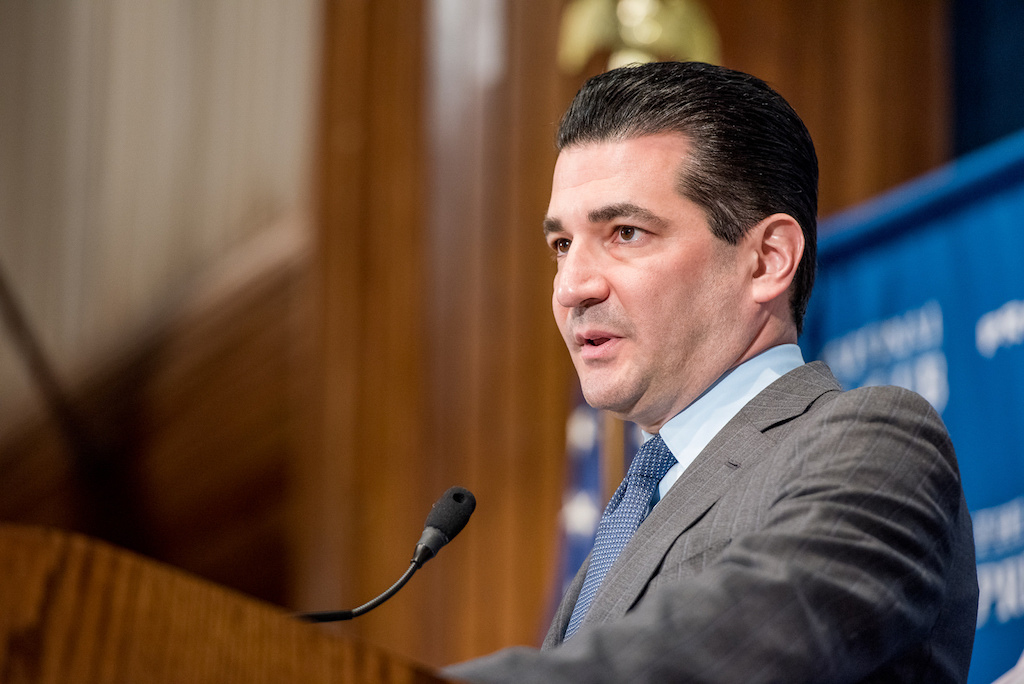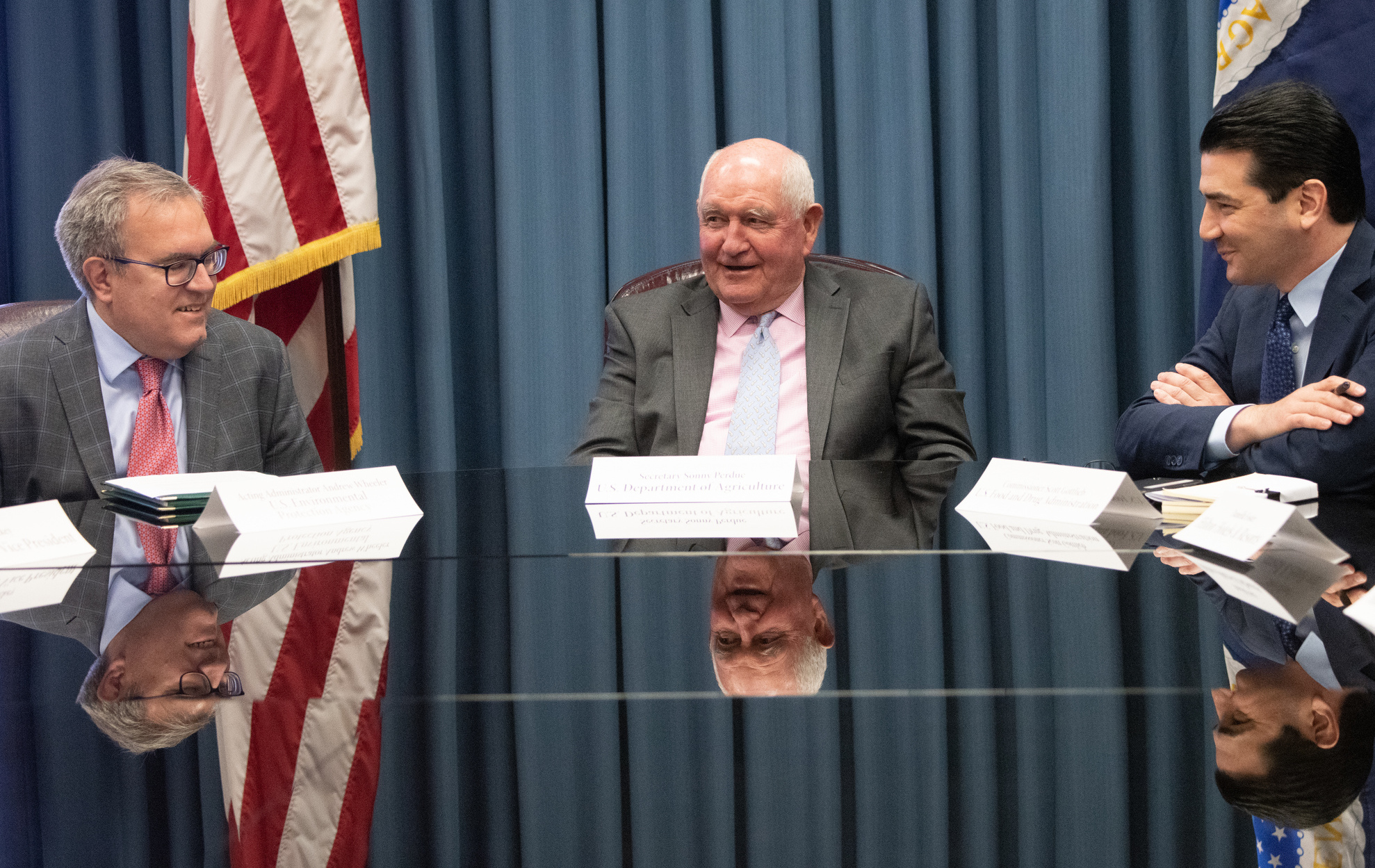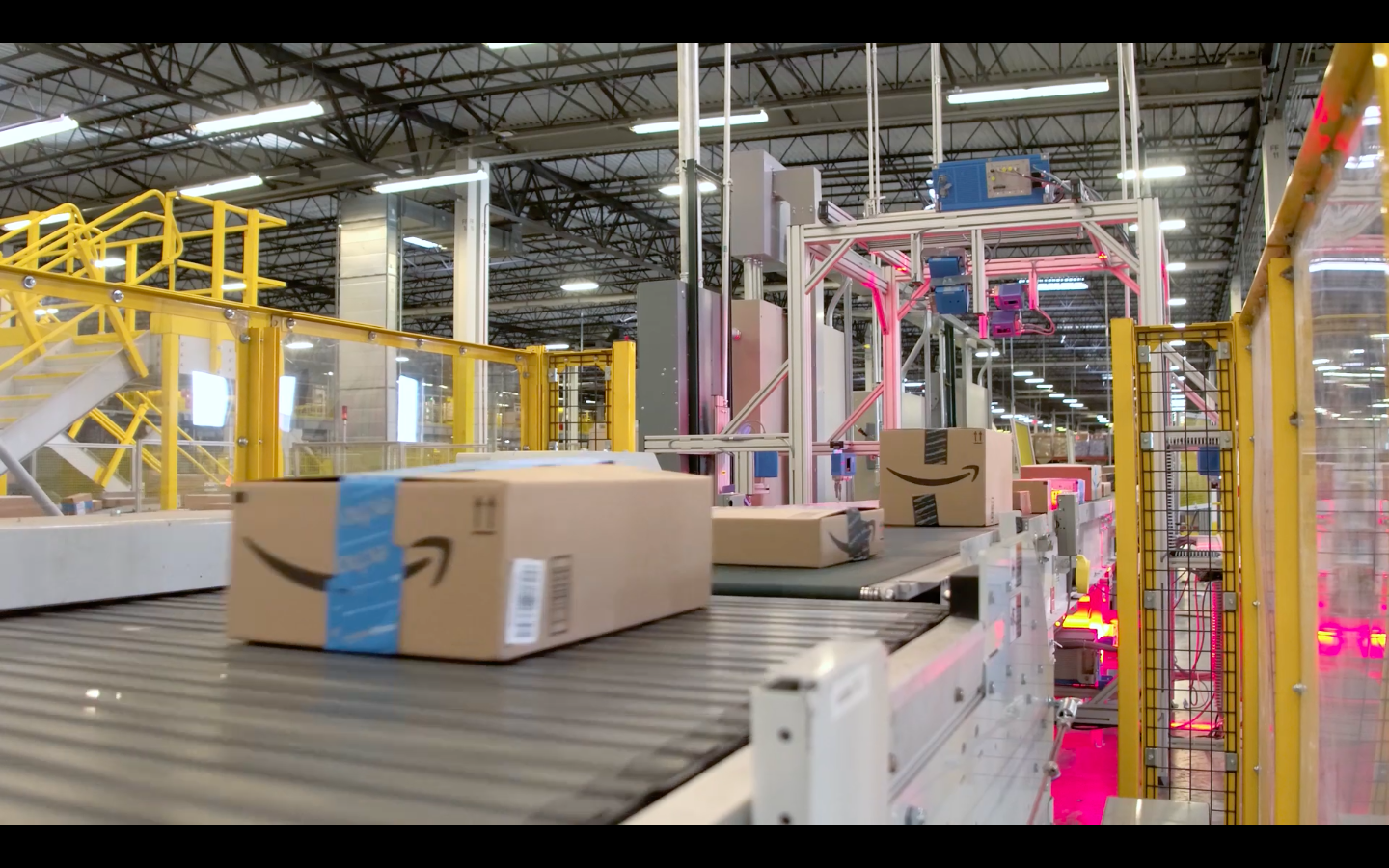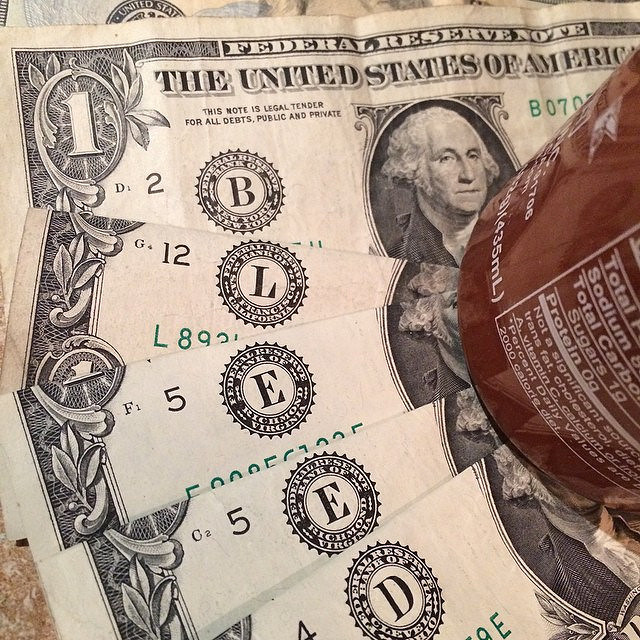Washington, D.C.—At the National Food Policy Conference on Thursday, politicians, lobbyists, and representatives from various factions of the food industry heard from Food and Drug Administration (FDA) Commissioner Scott Gottlieb about how the agency plans to promote healthy eating and improve public nutrition. At the core of its new agenda is informed consumer choice and, particularly, better food labeling.
Gottlieb, who has served as commissioner for under a year, presented a number of ideas developed by the agency’s food branch, known as the Center for Food Safety and Applied Nutrition, many of which were rapturously received by the public health advocates in attendance. To start, he said, FDA plans to “modernize” its approach to food labels and packaging claims.
Right now, the agency has oversight on any health-related claims food companies make that their ingredients reduce the risk of or prevent certain conditions. Think folic acid and birth defects, or fish oil and coronary heart disease. It also regulates claims made that a particular food may contain a meaningful amount of nutrients, like calcium or vitamin C.
Going forward, the agency plans to re-evaluate its stance on the meaning of “healthy,” and update its famously nebulous definition—something FDA has been reluctant to do for years. In guidelines first established in 1993, the term “healthy,” according to FDA, generally refers to a product’s fat content, and the amount of beneficial nutrients it contains. Ideally, Gottlieb said, a new definition would reflect the presence of certain food groups, such as whole grains, low-fat dairy, fruits and vegetables, and healthy oils, rather than nutrients.
“People eat foods, not nutrients,” he said, adding that FDA will consider creating a “healthy” icon or symbol for use on food packaging that will help eaters identify compliant products.
Along with rethinking the definition of “healthy,” the agency also plans to take another look at the term “natural.” During a lengthy and contentious public comment period over the last two years, FDA has received 7,600 comments about whether to officially define “natural,” some of which, Gottlieb pointed out, had nothing to do with matters of public health. (“Take natural off the chips, you fucking liars,” is a noted example.)
Currently, FDA says the term “natural” means that nothing artificial or synthetic has been added to a food that you wouldn’t normally expect to be there. But the agency studiously avoids an official definition. (On Wednesday, a conference panelist pontificated that the term is loose, and lacks teeth, because members of the food industry “drove a proverbial mack truck through it.”) Gottlieb said the agency plans to address the “natural” definition “very soon,” but stopped short of offering any potential wording.
Possibly in response to that confusion, Gottlieb suggested that FDA may propose more “readable and understandable” names for certain ingredients, such as vitamin B6, instead of pyridoxine. Currently, he said, the agency is reviewing a petition for an alternative name for the ingredient potassium chloride, which some eaters wrongly believe is bleach. In fact, it’s a common salt substitute.
Different factions of the food industry support clean labels for different reasons. Marketers believe clean labels soothe anxious consumers who want transparency—a major buzzword at this year’s conference. Public health advocates, meanwhile, believe “clean” foods have the potential to be more healthful, but are not, per se. When Gottlieb was asked to define a clean label, he hemmed and hawed, and judiciously said that it was important to find “voluntary” means by which sponsors and manufacturers can put useful labels on packaging.
Gottlieb said FDA may “take a fresh look” at some food standards of identity, or federal requirements for what ingredients must be in a food product, like bread, jam or chocolate, in order to legally use the name. (Those standards explain why margarine, for example, can not be called butter.) The standards for cheese, for example, don’t allow salt substitutes that could lower the sodium content. Interestingly, Gottlieb did say the agency had been asked to modernize standards of identity for yogurt, but did not say by whom. Currently, yogurt has to be made with dairy products. Could that change?
One of the hallmarks of food policy agendas is that they often bring together what insiders love to call strange bedfellows. It’s not uncommon, for example, to find political opposites uniting over issues of hunger or nutrition or farm subsidies. Until recently, for example, policymakers had bragged that the farm bill wasn’t “partisan.” Gottlieb’s FDA agenda—at least, as it was presented to the stakeholder crowd in Washington this week—indicates that, under his leadership, the agency may well continue to push the previous administration’s nutrition agenda.










